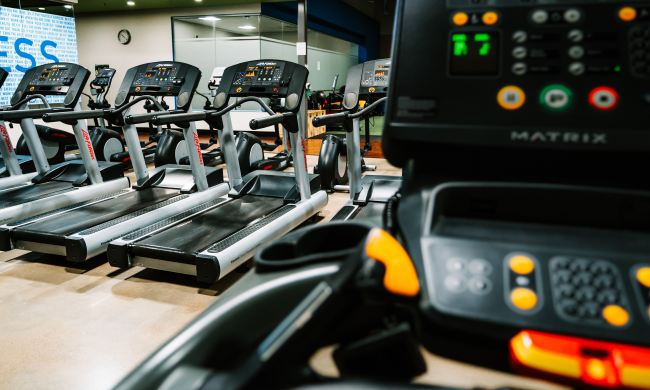The CDC has shared that “adults need at least 150 minutes of moderate-intensity physical activity a week, such as 30 minutes a day, 5 days a week.” As a personal trainer, this is also a baseline I use with many of my clients, as cardio is an essential part of a healthy lifestyle.
If this is a habit you are trying to implement into your life, then you will soon reap the many rewards. But what form of cardio is best? Is the stationary bike good cardio? Keep reading to find out!
Is the stationary bike a good form of cardio?

The stationary bike provides a versatile and effective cardiovascular workout suitable for all fitness levels. It allows you to control the intensity by adjusting resistance and speed, making it perfect for both beginners and advanced athletes. Unlike high-impact activities such as running, cycling on a stationary bike is gentle on the joints, reducing the risk of injury or aggravating existing conditions.
Also, because it targets large muscle groups in the legs, cycling raises your heart rate efficiently, improving cardiovascular endurance and lung capacity. You can use it for steady-state cardio to build endurance or perform high-intensity interval training (HIIT) to improve stamina and burn calories.
What are the benefits of stationary bikes?

Easy on the joints
Stationary bikes provide a low-impact workout that reduces stress on knees, hips, and ankles. This makes cycling ideal for people with arthritis, injuries, or joint sensitivity.
Strengthens the lower body
Cycling targets muscles in the lower body, including the quadriceps, hamstrings, glutes, and calves, helping to improve strength that supports other athletic activities in addition to everyday movements.
Convenient and safe
Indoor cycling on a stationary bike eliminates weather concerns and traffic hazards, providing a safe and controlled environment for consistent workouts anytime.
How often should you use a stationary bike to see results?

To see results from using a stationary bike, consistency and workout duration are key. For general fitness and health benefits, aim for three to five sessions per week. Each session should last between 20 and 45 minutes, depending on your
If your goal is weight loss or improved cardiovascular endurance, longer sessions—around 30 to 60 minutes—at a moderate intensity are effective. For building stamina or improving performance, incorporating interval training two to three times per week can speed up progress. This might involve alternating short bursts of high intensity with recovery periods.
Beginners can start with shorter sessions, around 15 to 20 minutes, gradually increasing time and intensity as endurance improves. The same goes for the number of weekly sessions. Listening to your body and allowing rest days is important to prevent burnout or injury.
Tips for progressing your cardio workouts

- Increase duration gradually: Extend your cardio sessions by five to 10 minutes every week to build endurance without overtraining. This gradual increase helps your body adapt and reduces the risk of injury.
- Add interval training: Incorporate short bursts of high intensity followed by recovery periods. This method boosts cardiovascular fitness faster than steady-state cardio and keeps workouts engaging.
- Vary your workouts: Switch between different cardio activities like running, cycling, swimming, or rowing. Variety challenges different muscle groups and prevents boredom.
- Monitor your intensity: Use tools like heart rate monitors or perceived exertion scales to ensure you’re training at the right effort level. Gradually increasing intensity improves performance safely.
- Include recovery days: Allow your body time to repair and strengthen. Overdoing cardio without rest can lead to burnout or injury.
- Set clear goals: Define specific, measurable targets such as running a certain distance or time. Goals keep you motivated and focused on progress.
Frequently asked questions

Can a stationary bike burn belly fat?
Yes, a stationary bike can help burn belly fat by increasing your overall calorie burn and boosting metabolism. Combined with a healthy diet and calorie deficit, cycling aids fat loss throughout the body, including the belly. However, spot reduction isn’t possible—fat loss happens all over, not just one area.
Can you get in shape just on a stationary bike?
You can improve your cardiovascular fitness and burn calories using only a stationary bike, which helps with weight loss and endurance. However, to benefit your body in the best way, try combining cycling with strength training and flexibility exercises for balanced muscle development, strength, and overall
Is a stationary bike better than a treadmill?
A stationary bike is gentler on the joints and ideal for low-impact cardio, while a treadmill better mimics natural running or walking. The best choice depends on your fitness goals, joint health, and preferences. Both can improve cardiovascular




